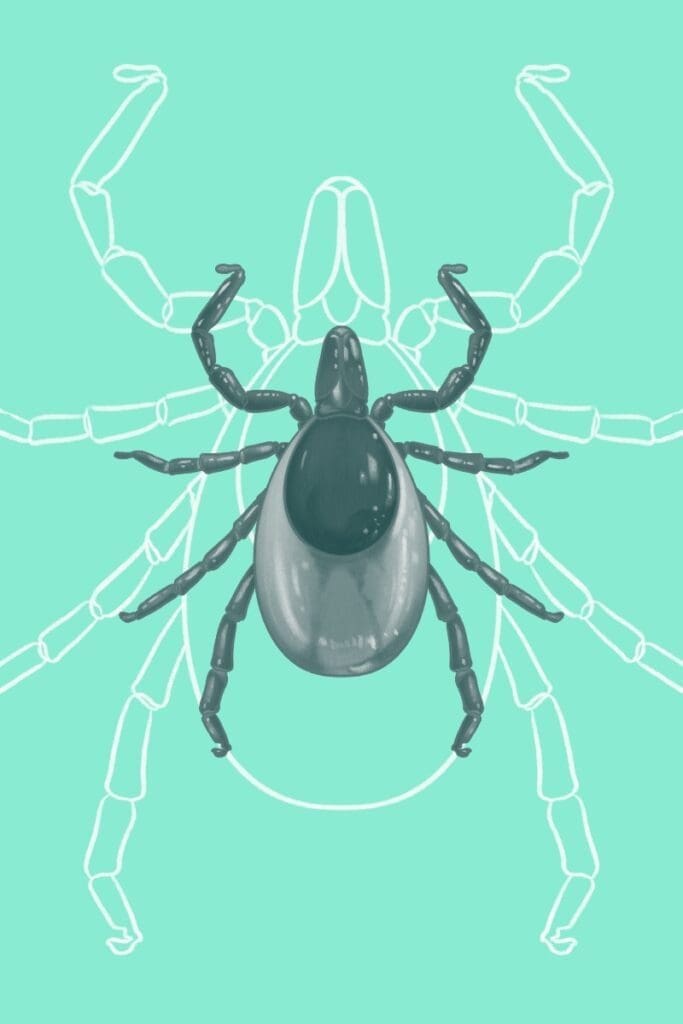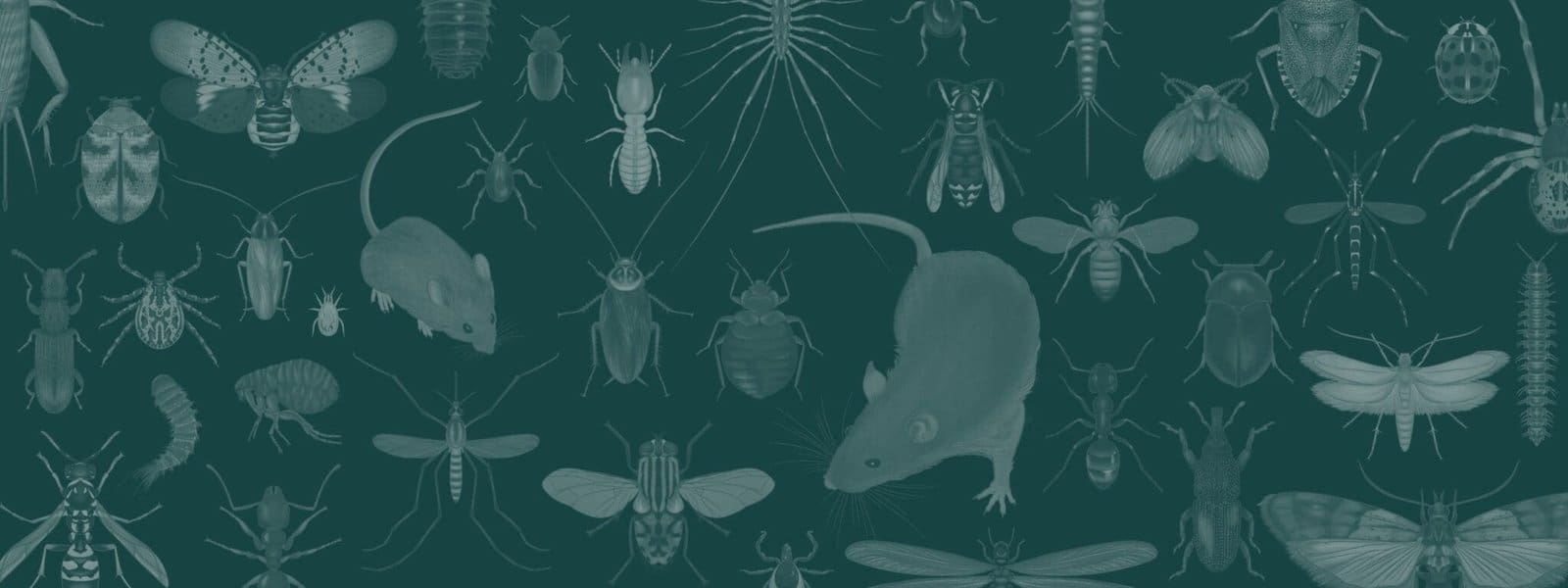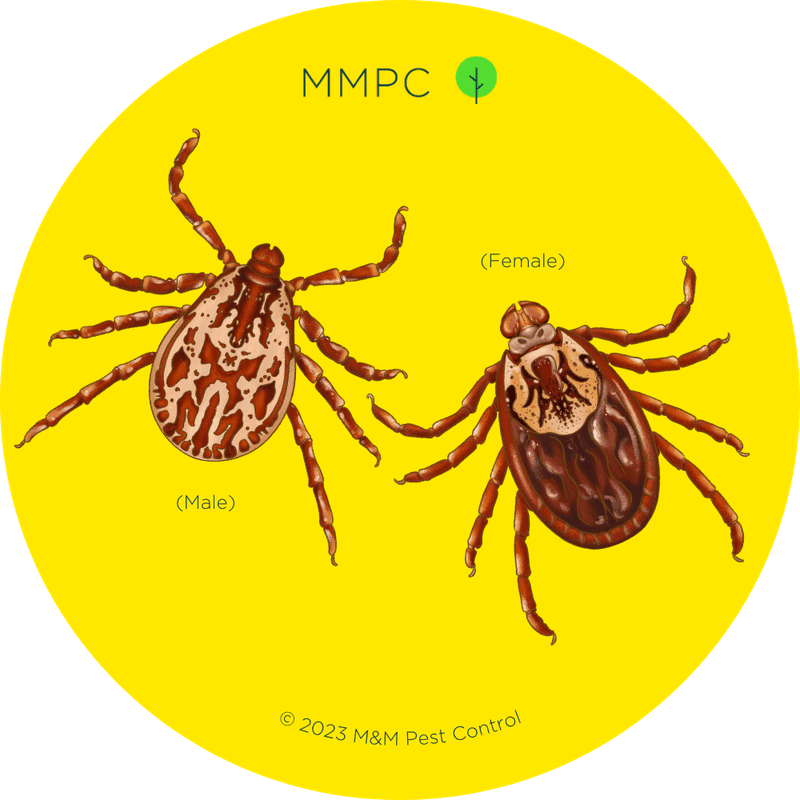
About Ticks
Ticks are small, blood-sucking pests (ectoparasites) belonging to the class Arachnida. Like spiders, adult ticks have 8 legs and 2 main body segments (a cephalothorax and an abdomen).
- Their bites can transmit a variety of serious diseases, including Lyme disease, Rocky Mountain spotted fever, and ehrlichiosis.
- Many species have a 2 year life cycle with 4 stages: egg, 6-legged larvae, 8-legged nymph, and adult.
- Hard ticks (Ixodidae) have a hardened plate on the back called a scutum, which is helpful for distinguishing species and gender.
- Soft (Argasidae) ticks lack a scutum.
Ticks in Your Backyard
Ticks prefer to live in shady, moist areas outdoors with plenty of tall grass and shrubs. They’re most active during warmer months from spring to fall. In New York, tick activity peaks from March to mid-May and from mid-August to November, according to the NYS Department of Health.
Tick bites are often occur near joints (knees, armpits, fingers, and toes), belly button, groin, scalp, and behind the ears. If you find a tick, carefully remove it with fine-tipped tweezers, grasping it as close to the skin as possible and pulling steadily upwards. Once removed, preserve the tick in a vial and contact your healthcare provider for proper identification and guidance on any potential health risks.
Minimize the risk of ticks by keeping your lawn mowed, trimming shrubs and trees, and clearing away fallen leaves. If your home borders a park or wooded area, create a barrier of wood chips or gravel to prevent ticks from entering recreational spaces. During tick season, consider using a licensed pest control company like MMPC to apply insecticide treatments specifically formulated for ticks.

Pest Species in New York City / Tri-State Area:
American Dog Tick / Wood Tick
Dermacentor variabilis
American dog ticks are mainly found in the eastern United States as well as parts of California.
These ticks are typically active in the spring and summer (between April and August). Their preferred hosts are medium-sized animals like dogs, cats, deer, raccoons, and skunks.
Notable diseases they carry include Rocky Mountain spotted fever and tularemia.

Size: 1/8″ – 1/5″ long (3.5 – 5 mm); about the size of a flax seed; expands up to 3/5″ long (15 mm) after feeding
Color: Brown or reddish-brown with silvery markings
Shape: Flat, oval-shaped body with a small head, scutum, large abdomen, and 8 legs; no antennae or wings
Identifying Features
- 8 flexible legs, each with 7 segments
- Small, rectangular head with short mouthparts
- Flat, oval-shaped body with a large abdomen that becomes large and bloated after feeding
- Pie crust-shaped grooves (festoons) around the rear edges of the abdomen
- A mottled scutum with silvery or cream-colored markings
- Females have a small scutum with a pale halo, while males have a large scutum covering the entire back with pale streaks
Brown Dog Tick
Rhipicephalus sanguineus
Brown dog ticks mainly feed on dogs and rarely bite humans.
They are widespread around the world, especially in warmer climates. In the northeastern United States, brown dog ticks are almost exclusively found indoors or in dog kennels.
Unlike other ticks, they’re able to complete their entire life cycle indoors so these ticks can be found all throughout the year.
Notable diseases they carry include Rocky Mountain fever, canine ehrlichiosis, and canine babesiosis.

Size: 1/12″ – 1/8″ long (2 – 3 mm); about the size of a sesame seed; expands up to 1/2″ long (13 mm) after feeding
Color: Yellowish-to-reddish brown
Shape: Flat, elongated, oval-shaped body with a small head, scutum, large abdomen, and 8 legs; no antennae or wings
Identifying Features
- 8 flexible legs, each with 7 segments
- Small, hexagonal head with triangular mouthparts
- Flat, oval-shaped body with a large abdomen that becomes large and bloated after feeding
- Pie crust-shaped grooves (festoons) around the rear edges of the abdomen
- A reddish brown scutum
- Females have a small scutum, while males have a large scutum covering the entire back
Deer Tick / Eastern Black-Legged Tick
Ixodes scapularis
Deer ticks, or eastern black-legged ticks, are the main vector of Lyme disease.
They’re found across the eastern United States and the Great Lakes region, and their primary host is the white-tailed deer.
Adult ticks are active from late fall to spring (between October and May), while nymphs are active from spring to summer (between April and August).
Other notable diseases they carry include anaplasmosis, ehrlichiosis, babesiosis, and Powassan virus disease.

Size: 1/16″ – 1/8″ long (1 – 3 mm); about the size of a poppy seed; expands up to 1/2″ long (13 mm) after feeding
Color: Females are reddish-orange with a dark brown scutum; males are dark brown
Shape: Small, flat, oval-shaped body with a small head, scutum, large abdomen, and 8 legs; no antennae or wings
Identifying Features
- 8 flexible legs, each with 7 segments
- Small, rectangular head with long, narrow mouthparts
- Flat, oval-shaped body with a large abdomen that becomes large and bloated after feeding
- No festoons
- A dark brown-to-black scutum
- Females have a small scutum and reddish-orange abdomen, while males have a large scutum covering the entire back
Lone Star Tick
Amblyomma americanum
Lone star ticks are found in woodlands in the eastern and southern United States. They are aggressive biters that feed on dogs, coyotes, deer, cattle, and humans.
These ticks are typically active in the spring and summer (between April and August).
Their bites may transmit southern tick-associated rash illness (STARI), which is sometimes mistaken for Lyme disease due to the similar-looking circular rash.
Other notable diseases they carry include ehrlichiosis, tularemia, Heartland Virus disease, Bourbon virus diseases, and alpha-gal syndrome.

Size: 1/8″ – 1/6″ long (3 – 4 mm); about the size of a lentil seed; expands up to 1/2″ long (13 mm) after feeding
Color: Reddish-brown; females have a white spot on the back
Shape: Flat, oval-shaped body with a small head, scutum, large abdomen, and 8 legs; no antennae or wings
Identifying Features
- 8 flexible legs, each with 7 segments
- Small, rectangular head with long, narrow mouthparts
- Flat, oval-shaped body with a large abdomen that becomes large and bloated after feeding
- Pie crust-shaped grooves (festoons) around the rear edges of the abdomen
- A reddish-brown scutum with different markings between males and females (sexual dimorphism)
- Females have a small scutum with a characteristic silvery-white spot in the center of the back, while males have a large scutum with dark markings covering the entire back


